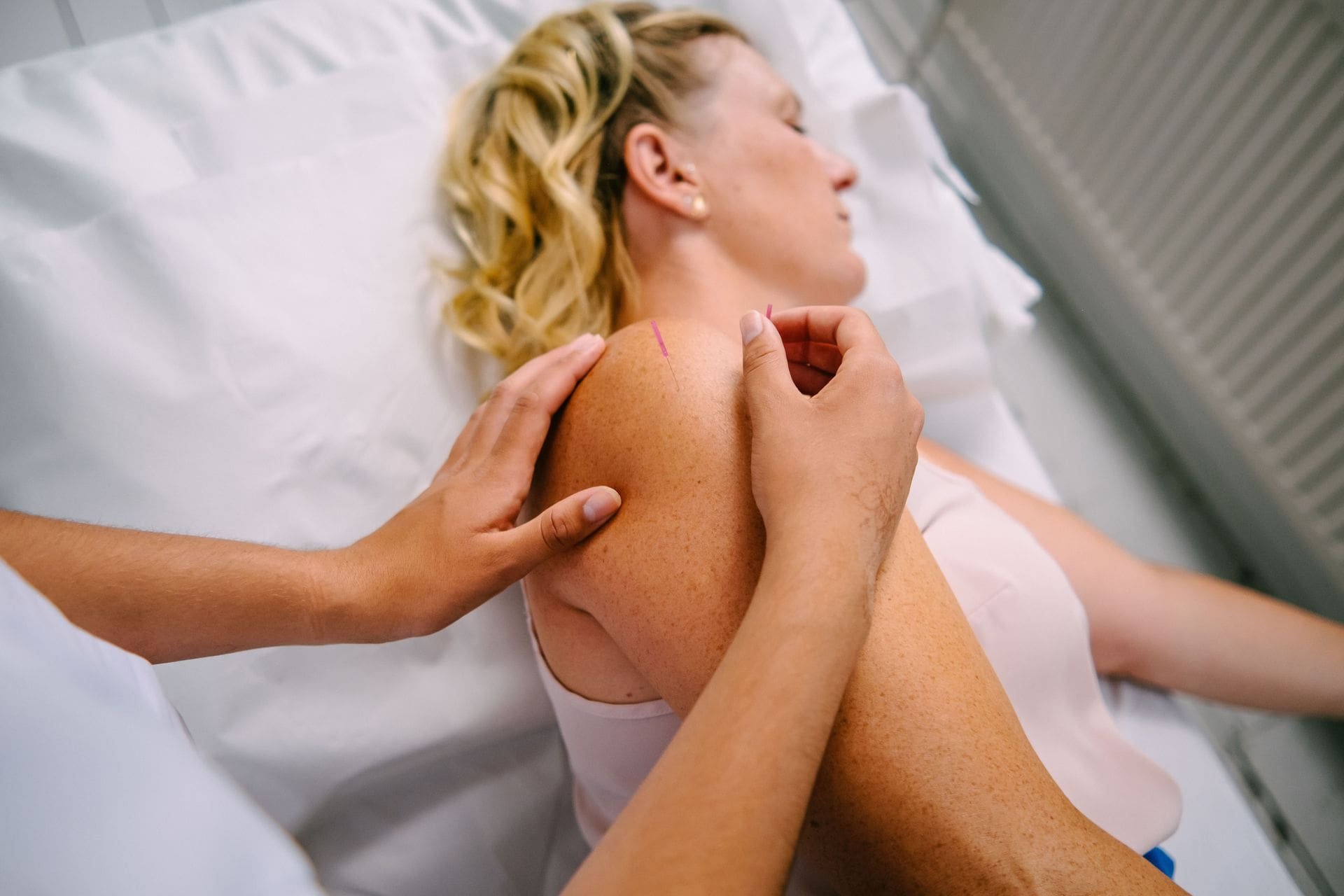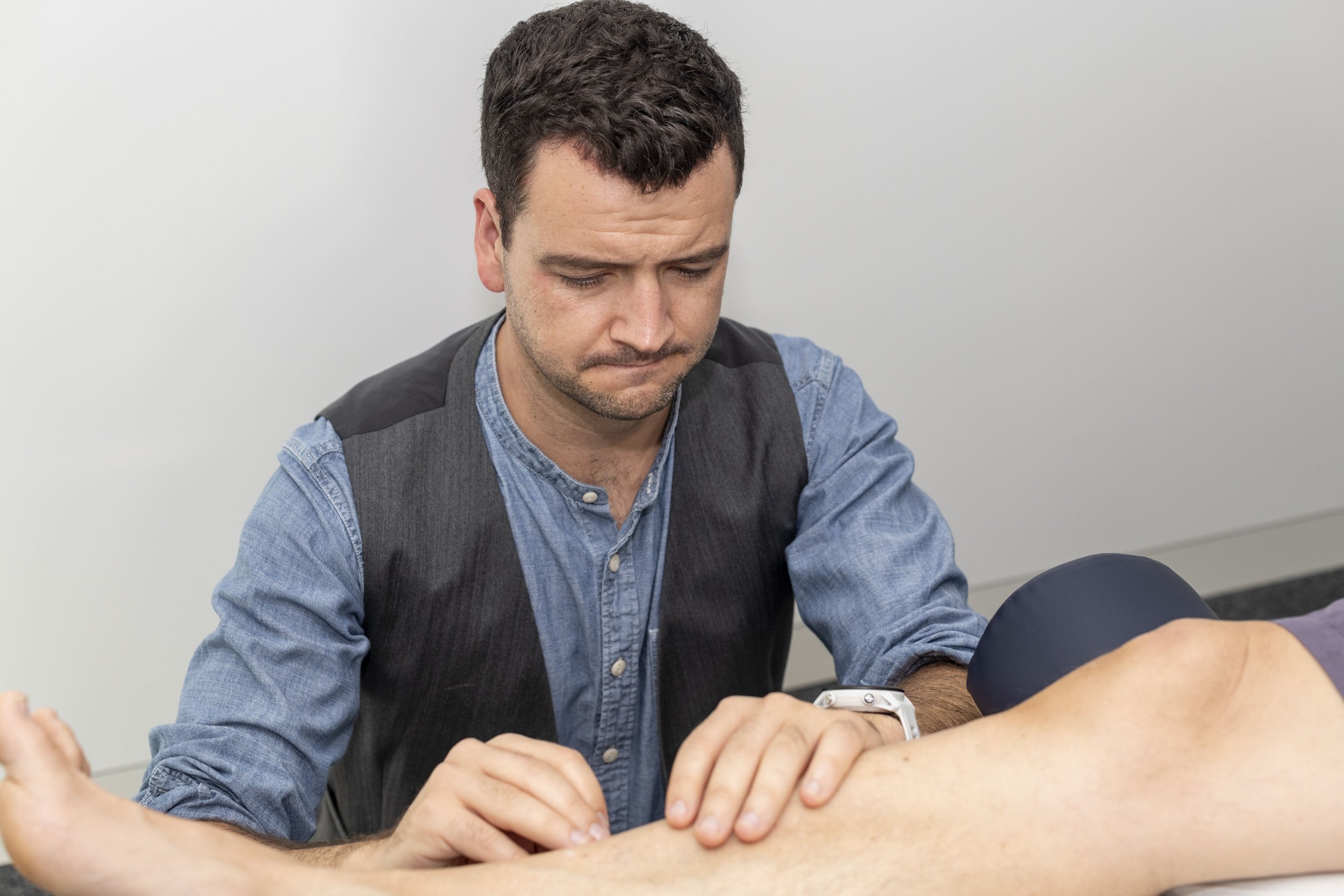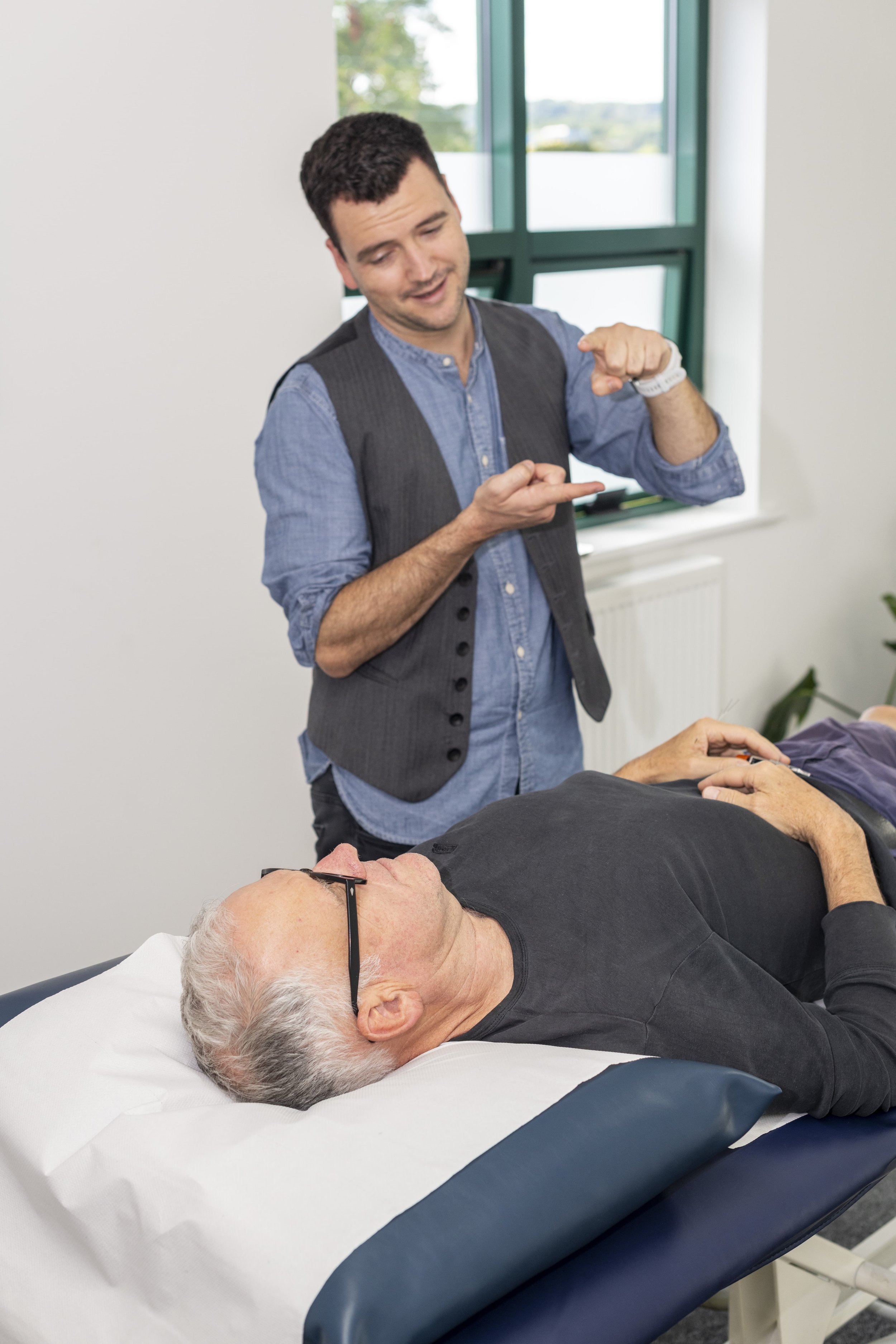
Acupuncture for Musculoskeletal Pain
Acupuncture is often used for all types of muscle pain and body aches. This covers everything from back pain, shoulder pain, and knee pain to arthritis and stiff joints.
Acupuncture For Pain
Physical and muscular pain is one of the most common routes for patients into acupuncture. These include several different areas, such as neck pain, shoulder pain, back pain, and much more. Often, the results are quick, 3 to 5 sessions, and most of the discomfort clears, leading to a deep fascination with acupuncture. More often than not, this opens the path to a new understanding of health where acupuncture doesn't see illness as an absence of health but rather harmony within the body. It's the start of a journey back to full health.
So what do we treat a lot?
The list above is not exhaustive. We treat peripheral neuropathy, temporomandibular (TMD/TMJ) pain, sprains, scarring, and more. Acupuncture treats the underlying cause, the channels and muscles affected, and promotes wellbeing, meaning most people see good and holistic results.
An Athlete’s View
Josh is a triathlete and has competed in multiple sports his whole life, meaning he knows firsthand how debilitating pain can be. There is not much worse than acute or chronic back pain. Nothing is more infuriating than shoulder or knee pains affecting our quality of life. That's where Josh loves understanding a patient's overall health, weaving the patterns together from a holistic perspective, and combining Chinese Medicine with Western Medicine through techniques such as acupuncture, massage, cupping, moxibustion, and more. Josh aims to help you return to a state of wholeness, where your physical and mental wellbeing are balanced, and you can return to living your best life.
How Acupuncture Treats Pain
“If there is free flow, there is no pain; if there is pain, there is lack of free flow”
(不通這痛,痛則不通)
-
This “free flow” refers to blood but also to the concept of 'Qi' (氣), which is usually translated as things like breath or energy. It's the motive force behind all movement and physiological processes and the driver of change.
In Chinese Medicine, health is often defined as a harmonious flow of qi around our body rather than merely just the absence of disease. Hence, when things are not free flowing we experience pain. Blockages can be caused by lifestyle factors, significant events or traumas, our emotions, and lots more. The lack of free flow is seen in many different ways, which range from muscular pain and internal conditions like a digestive concern or chronic headaches to difficult experiences in fertility and much more.
In a simple way, acupuncture works by encouraging the free flow of blood and qi around our body to prevent and cure illness. It’s a noninvasive, nonpainful, and side-effect-free intervention that can help with a wide range of health concerns.
-
We clear blockages primarily by using points on the 14 main meridians to establish a free flow of movement. We also use a combination of 'ah shi' points, often overlapping with dry needling’s trigger points, which translate roughly as 'oh yes' and could be substituted with swear words.
-
In the classics, pain syndromes are diagnosed in one of two ways: bi or wei syndrome. These are typically caused by a climatic influence that can have long-term and long-lasting consequences. Each of the climatic influences affects us in different ways:
Cold: sharp, stabbing pain
Heat: Inflammation
Wind: Moving pain or pain that comes and comes
The elements and climates can sound slightly esoteric, but there's a lot to be said about them. Take cold, for example. Cold contracts cause any movement to stop, which we see when we freeze things, so there's little reason why this causes pain. We often encourage movement by warming things up, such as using moxa or a heat lamp, and pain starts to subside.
-
Releasing the Endorphins: Acupuncture changes the chemicals in our brains, such as endorphins, our body's natural painkillers, to be released, which helps to bring relief.
Muscle Relaxation: Pain often results from overuse, overly tight, or injured muscles. Acupuncture and other techniques can help release tension.
Mental Wellbeing: Often, when we are in severe acute pain or have suffered from long-term dull aches, our mental health is affected, too. Acupuncture can help to treat our mental wellbeing.
Treating the Underlying Cause: Acupuncture views the body as a whole, so often, we look for the overall picture of our health. It's not just the back pain we experience but also our other signs and symptoms. It's about treating the individual as much as the pain.
Using Western Medical Approaches
Josh embraces a holistic approach to alleviating musculoskeletal pain, seamlessly blending the ancient wisdom of acupuncture with the latest evidence-based medical techniques. His treatments are thoughtfully personalised, often incorporating complementary therapies such as massage to ensure a comprehensive care plan tailored to each patient's needs.
As a proud registered member of the British Medical Acupuncture Society (BMAS), Josh employs a modern approach to acupuncture that harmonises time-honoured practices with contemporary medical insights. The growing acceptance of acupuncture among various healthcare professionals, including general practitioners and physiotherapists, speaks volumes about its effectiveness in pain management. While some practitioners utilise dry needling—a technique taught over brief training sessions primarily focused on Western perspectives—Josh's approach dives much more profoundly.
Acupuncture is an intricate art that requires three years of dedicated study to master genuinely. It encompasses more than symptom relief, offering a profound understanding of the body's energy systems, or Qi, and recognising the vital connection between physical, emotional, and spiritual wellbeing. With his extensive knowledge, Josh is dedicated to addressing the root causes of pain and fostering long-term wellness, making him a trusted partner in your journey toward healing and vitality.
Other Techniques
Moxibustion is a traditional therapy that involves applying heat to specific acupuncture points on the body by burning moxa—dried mugwort. The gentle, penetrating warmth generated by moxibustion enhances blood circulation and effectively addresses conditions where cold has settled in the body. This technique can bring balance, warmth, and relief to affected areas by invigorating energy and blood flow.
Cupping therapy, another ancient practice, uses suction cups made of either plastic or glass to create a vacuum effect on the skin. This suction promotes the free flow of blood and energy to the targeted area, helping to release tight muscles, alleviate tension, and ease discomfort. The technique also supports detoxification and encourages natural healing by drawing stagnant blood and toxins to the surface.
Gua Sha is a scraping technique that uses a smooth-edged tool—ranging from specialised tools to even a simple jam jar lid—to scrape the skin gently. This stimulates microcirculation in the area, breaking up stagnation and promoting the free movement of blood and energy. Gua Sha is highly effective in reducing inflammation, relieving pain, and releasing tight muscles and fascia. The process relieves musculoskeletal issues and helps rejuvenate the body by restoring balance and vitality.
Ready to Say Goodbye to Your Pain?
A large systematic review included over 20,000 patients in 39 different trials. It covered a wide range of chronic pain conditions, including back pain, osteoarthritis of the knee, neck pain, migraines, shoulder pain, and more.
For the above chronic pain conditions, the review found:
Acupuncture is superior to not having acupuncture (who would have known?)
Acupuncture is more effective when compared to placebo interventions
The parameters to test pain are reduced immediately but also persist over more extended periods
(Source: Acupuncture for Chronic Pain: Update of an Individual Patient Data Meta-Analysis (2018) )
These are just some of the research on how acupuncture can help pain. What's not included in research studies are the thousands of people who aren't part of a research study but are being treated successfully worldwide.
In the clinic, we have treated hundreds of patients for pain, and the results are often called 'miraculous'.
How Long Will it Take?
The answer depends. For acute injuries, the results can be immediate. The answer is more tricky for conditions that have existed for a while. There are some indications that we may use as a starting point. Still, my primary suggestion would be to book three to five sessions in as close to consecutive weeks as possible, giving us a powerful indication of what improvements you see and how your body responds to acupuncture.
I often find that there are often five outcomes after any treatment:
Completely back to normal
Improvements after a couple of days
Improvements, but then things go back to how they were
Things stay the same or feel slightly more sore before improvements happen
No change
Only the last one is bad. This typically means that I have gone with the wrong diagnosis, but at least it means that we would have ruled something out. Think of it like having a blood test to rule out a particular condition. It's much like that. But it means that the next session will help us refine the diagnosis and find your desired outcome.





